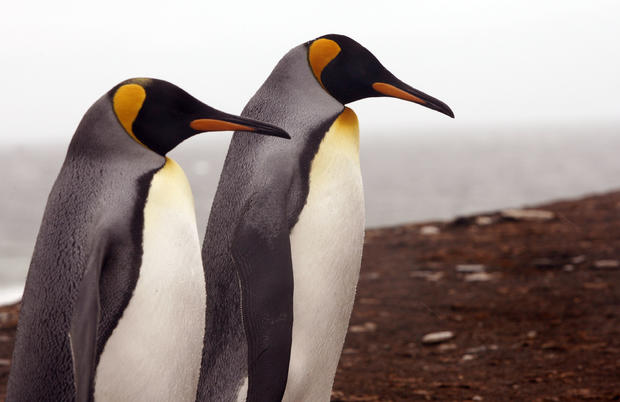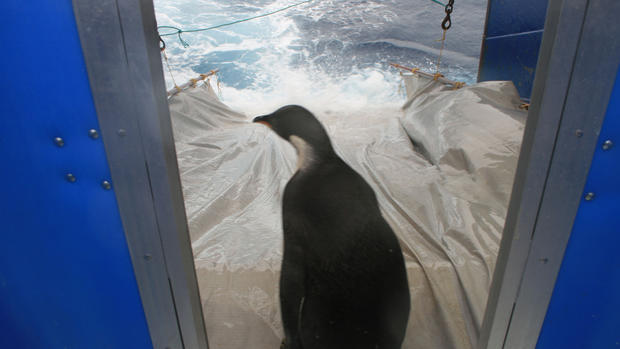Strange but true: Seals found sexually assaulting penguins
The first time marine biologist William Haddad and his team saw a seal rape a penguin, they were shocked.
By the fourth time, they were convinced this bizarre behavior was becoming a trend.
For 50 years, researchers from the marine mammal program at the University of Pretoria in South Africa have been taking weekly censuses of the elephant seal population on sub-Antarctic Marion Island, more than a thousand miles south of Cape Town in the Indian Ocean. In 2006, they saw something they'd never seen before. A fur seal (not the species they were studying) mounted and appeared to mate with a king penguin.
They published a paper about the odd finding in 2008.
Then in happened again in 2009. And again in 2011, and once more in 2012.
"For the past 50 years, there have been people once a week on the beaches and this had never been seen. We said, 'This is strange. Why is this happening more often now?' So we decided to write a paper and come up with a hypothesis," Haddad told CBS News.
Haddad explained that it's not out of the ordinary to see a bull of one species of seal courting the female of another species and herding her into his harem. It's even possible that a seal might to try to reproduce with a sea lion. But this was something different entirely.
"This is very weird because it's hair and feathers, mammals and birds," he said. "It's such a big gap, it's unheard of."
In all four cases of what Haddad and his collaborators call sexual coercion, a seal chased, captured and mounted a penguin of unknown sex, then attempted to copulate with it "several times with periods of rest in between." The birds remained pinned down for the duration. Penetration could only be confirmed in one instance, though it was likely in all of them. (Birds, including penguins, have one hole called a cloaca that serves excretory and reproductive functions.)
In three of the instances, the penguin was released after the act. In one tragic case, the seal killed and partially devoured its victim.
In their paper, published in November in the journal Polar Biology, the researchers described one observation thusly:
The seal ran up to the penguin and bumped it down. It lay on top of the penguin and started thrusting its hips in a copulatory fashion. The seal's erect penis was clearly visible. Two bouts of thrusting in a copulatory fashion was intermitted by a break during which the seal kept the penguin pinned to the ground with its flipper, but did not seem interested in it. Eventually, the seal got off the penguin, and the bird was able to get up and join a group of fellow king penguins on the beach.
The whole encounter lasted 10 minutes. Others lasted close to or over an hour. (There is some rather graphic video footage on YouTube.)
By the early 1900s, poachers had decimated the populations of seals on Marion Island. But the numbers have rebounded to the point where the animals are now spreading out to new beaches -- including those inhabited by king penguin colonies. Marion Island is the only place in the world where fur seals prey on penguins on land as opposed to in the water.
While the seals exist in a one-to-one male-to-female ratio, a single adult male will have a harem of five to seven females. This leaves extra males without mates. It is possible, the researchers reason, that this mate deprivation has driven unattached adolescents to extreme measures.
All of the assailants have belonged to what Haddad and his team call "the bad boys club," a group of sub-adult males who don't have harems of females to mate with, and half of the attacks have taken place on a "bachelors' beach," where there are no females.
Perhaps the seals are practicing for when they're old and strong enough to defend their own harems. It's even possible that they've learned the behavior from seeing it done. It does seem to be motivated by hormonal cues, as the phenomenon has only been observed during the animals' breeding season.
Could it be that the seals are simply taking the penguins for pleasure?
There's no specific evidence to support the theory, but Haddad allowed that it certainly looks that way: "In my opinion, I think yes, probably. The expression that seal had on its face -- it seemed like it was for fun."

